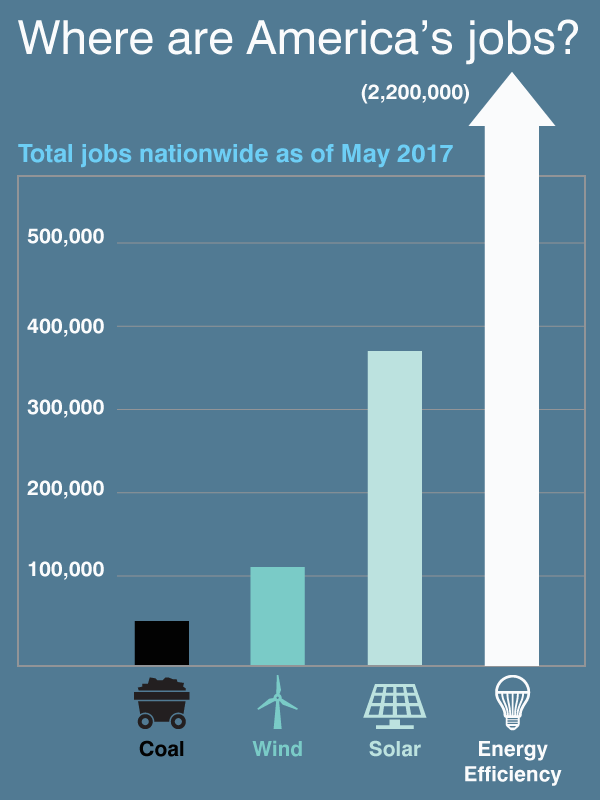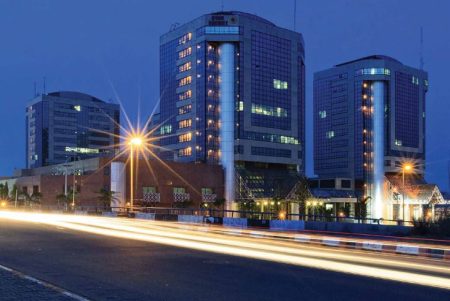 *Energy efficiency jobs grew 3% in 2017
*Energy efficiency jobs grew 3% in 2017
*17 states have more than 50,000 energy efficiency workers; 25 have more than 30,000
*Energy efficiency employs 2X as many Americans as fossil fuel industries
07 September 2018, Sweetcrude, Washington & Boston – Energy efficiency added more new jobs than any other industry in the entire U.S. energy sector in 2017, and now employs nearly 2.25 million Americans, according to a new jobs analysis from E4TheFuture and the national, nonpartisan business group E2.
The new report, Energy Efficiency Jobs in America 2018, finds energy efficiency workers now outnumber elementary and middle school teachers, and are nearly double the number of Americans who work in law enforcement.
“This good news buoys us beyond politics to unite a focus on the positive,” said Steve Cowell, president of E4TheFuture. “We have long known that energy efficiency is a major source of jobs, and by conservative estimates, about one in every hundred U.S. adults now works in energy efficiency. Efficiency is also a key strategy for meeting multiple policy objectives. It saves money, improves health, lowers carbon emissions and creates local jobs that cannot be outsourced.”
The report highlights energy efficiency’s growing economic importance. Efficiency added 67,000 net jobs in 2017, making it the fastest-growing job category in the energy sector. Energy efficiency employs twice as many workers as all fossil fuel industries combined. Efficiency workers now account for 35 percent of all U.S. energy jobs.
“We all know energy efficiency creates savings for consumers and businesses with every month’s electric bill,” said Bob Keefe, executive director of E2. “We also now know that energy efficiency creates jobs – millions of them – all across America. These are good-paying jobs at your neighborhood construction company, upgrading windows and installing insulation; at your hometown HVAC contractor, installing heat pumps and high-efficiency air conditioners; at your local factory, manufacturing Energy Star appliances and LED lighting systems; and at thousands of related companies nationwide.”
Among the states, California leads energy-efficiency employment with 310,000 jobs, followed by Texas (154,000), New York (117,000), Florida (112,000), and Illinois (87,000). Seventeen states now employ more than 50,000 workers and the 25 states with the most energy efficiency sector jobs all now employ over 30,000 workers (1.9 million total). Only four states saw a decline in energy efficiency employment in 2017.
With workers in 99.7% of U.S. counties, energy efficiency has become a nationwide job engine integral to state and local economic growth. More than 300,000 energy efficiency jobs are located in America’s rural areas, and 900,000 jobs are found in the nation’s top 25 metro areas. One out of every six U.S. construction workers are involved in energy efficiency, as are more than 315,000 manufacturing jobs, according to the report.
More detailed breakdowns of energy efficiency jobs for all 50 states and the District of Columbia – including job totals for every state’s congressional and legislative district, and maps of each state’s top counties — can be found at e2.org/eejobsamerica.
Other key findings:
- 11% of energy efficiency jobs are held by veterans, nearly double the national average for veterans’ share of employment (6%)
- In 40 states and the District of Columbia, more Americans work in energy efficiency than work with fossil fuels
- Construction and manufacturing make up over 70% of U.S. energy efficiency jobs
- More than 1 million energy efficiency jobs are in heating, ventilation, and cooling technologies
- Energy efficiency employers are expecting 9% job growth in 2018
- Energy efficiency now employs workers in 3,000 of America’s 3,007 counties
- Small businesses are driving America’s energy efficiency job boom, with 79% of energy efficiency businesses employing fewer than 20 workers
The report follows E2’s Clean Jobs America analysis, which found that clean energy employment accounts for nearly 3.2 million jobs across all 50 states and the District of Columbia. Both reports expand on the 2018 U.S. Energy and Employment Report (USEER), released in May by former Energy Secretary Ernest Moniz’s Energy Futures Initiative (EFI) and the National Association of State Energy Officials (NASEO). E4TheFuture and E2 were partners on the USEER.



